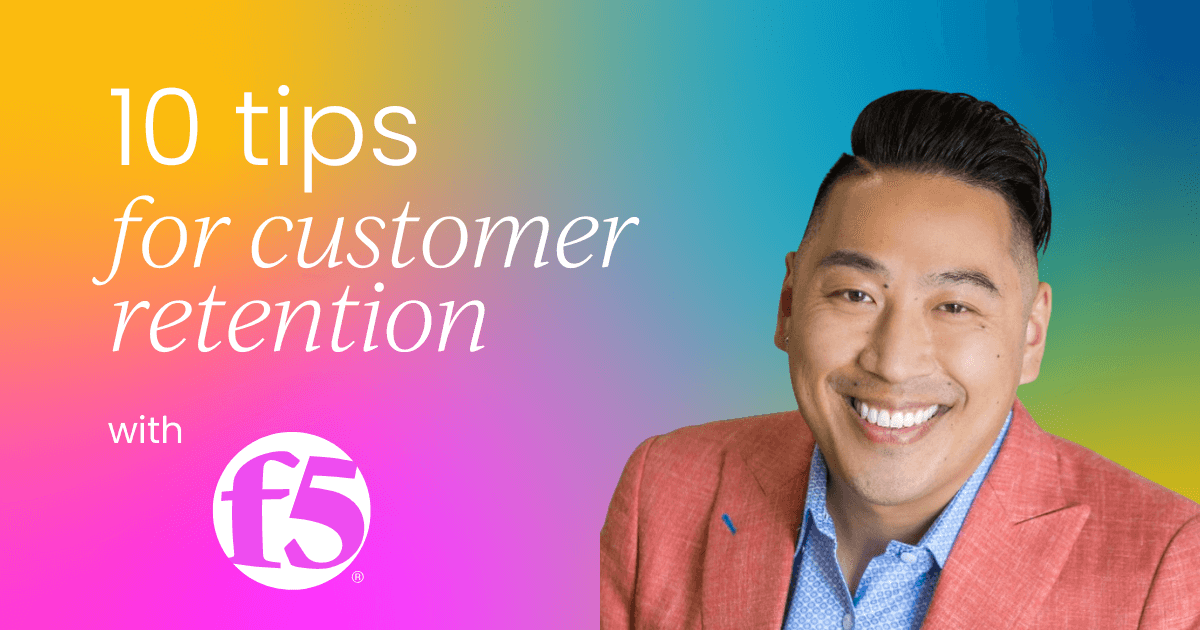This article comes from Kevin Lau’s insightful talk at our virtual Customer Marketing Summit in 2024, check out his full presentation.
At the time of the presentation, he was the Sr. Director of Global Customer Engagement at F5.
Retention is at the heart of sustainable growth.
I'm Kevin Lau, and I’ve spent years building programs that turn first-time customers into long-term advocates. In roles at companies like Adobe, F5, and now Freshworks, I’ve seen how a structured, cross-functional approach to retention can transform customer relationships and drive significant business outcomes.
In this article, I’ll walk you through my top 10 tips for developing scalable customer retention and lifecycle programs, covering everything from creating a foundational strategy to securing stakeholder buy-in and measuring results.
Getting started with retention strategy
When it comes to retention, the first step is to create a clear strategy. This includes obtaining alignment and engagement from key stakeholders.
Retention begins the moment a customer starts using your product, so onboarding is essential. Developing a multichannel approach is also crucial, and you’ll need the right resources — so don’t be afraid to ask for additional headcount or funding if needed.
At F5, we began building our customer engagement function around retention about a year ago, and I got to see first hand hand how impactful this focus can be.
Developing a retention framework
For any retention marketing strategy to succeed, I believe a framework or blueprint is essential. At a high level, a retention strategy should be cross-functional, involving teams from product, sales, and customer success to drive the program effectively.
Here’s a basic structure to guide you:
- Learn - Start by understanding the essentials: What does your customer need? What are the technical requirements? Take inventory of what you know.
- Listen - Listen proactively to successful customers. Understand their experience and map out the path to success.
- Create and deliver content - Develop content that’s both peer-generated and tailored to the right channels. This could involve user-generated content, case studies, or best practices.
- Measure and optimize - Continuously track the success of your implementations. Evaluate what’s working and adjust as needed.
Tailoring the retention strategy to customer stages and personas
Retention isn’t a one-size-fits-all approach; it must adapt to various customer stages and personas. For instance:
- Onboarding phase - When customers are new, focus on ensuring a smooth onboarding experience that clarifies the immediate steps they need to take.
- Familiarization phase - For customers who have been around for six months or so, reinforce their commitment by helping them derive continuous value.
- Advanced phase - Long-term customers (over a year) benefit from deeper engagement, like showcasing advanced use cases or new features.
It’s also important to think about who you’re engaging: Is it the end-user, the decision-maker, or an executive? Tailor your retention strategy based on these personas to ensure it resonates effectively.
10 steps to build a retention marketing strategy
Here are the ten steps that have consistently proven effective:
- Learn and understand the requirements
- Listen to customers and map the path to success
- Create your charter and program strategy
- Educate your stakeholder teams
- Showcast what great programs can look like
- Deliver a minimum viable program (MVP)
- Measure the results and continuously optimize
- Socialize your wins with stakeholders
- Develop an expansion and future vision
- Ask for what you need to accelerate results
By using these steps as a foundation, you’ll have a robust, flexible approach to developing and scaling a customer retention program that not only retains customers but also nurtures them into advocates.
Let’s look into each of these 10 steps in more detail.


 15 min read
15 min read
 Follow us on LinkedIn
Follow us on LinkedIn



